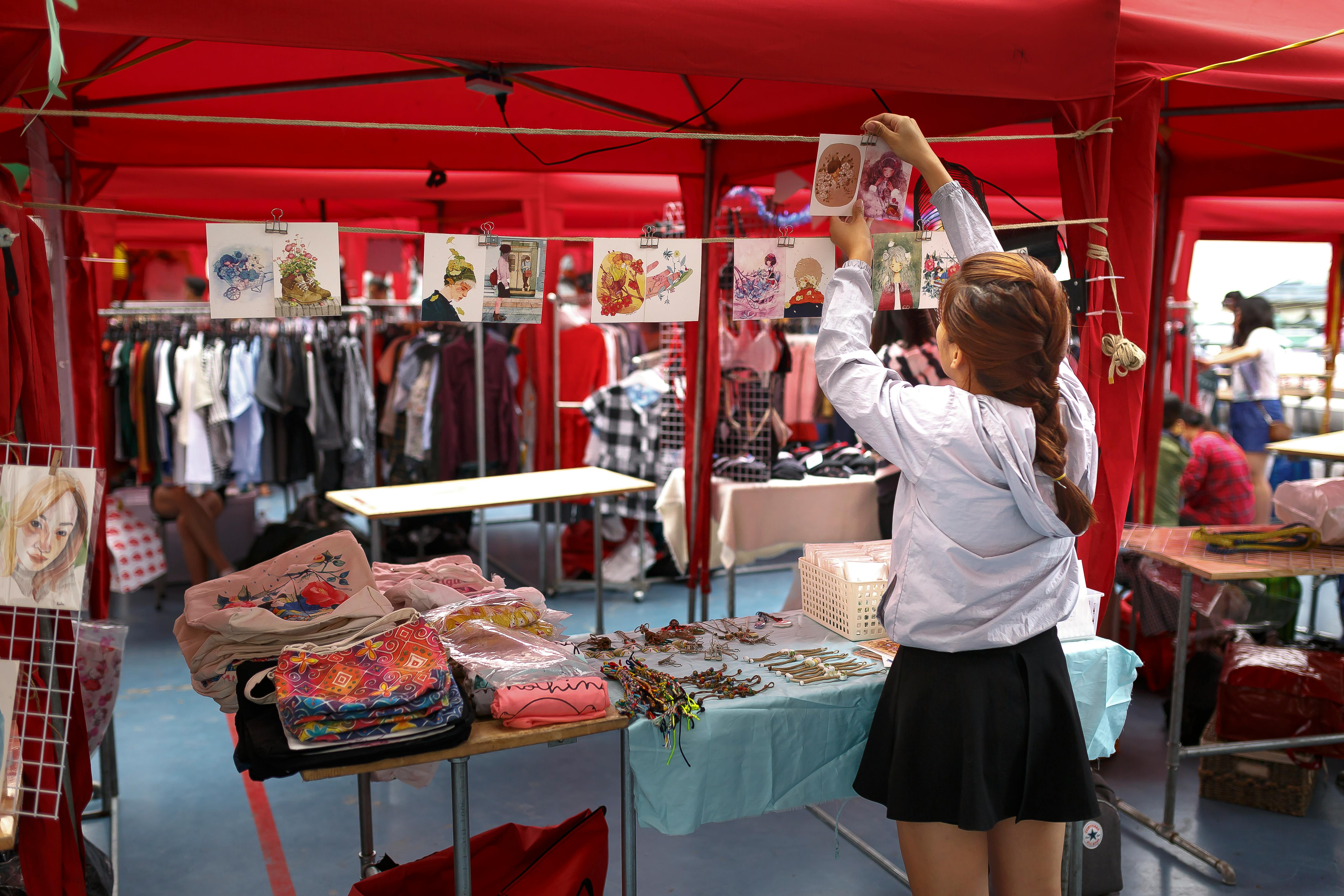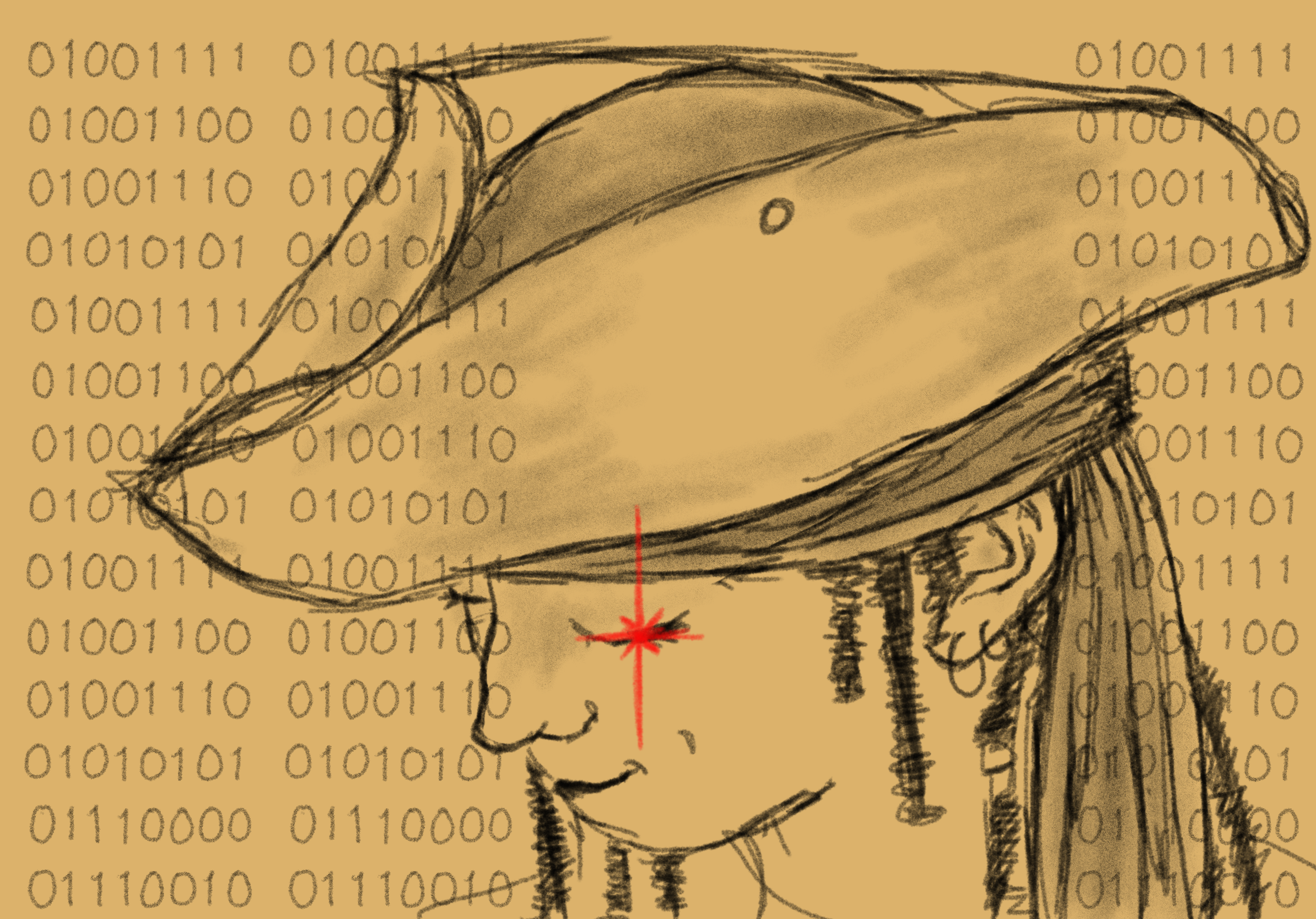A few months ago, before the air turned chilly and winter truly settled, I happened to be walking to class when I caught sight of an eye-catching poster hanging from a bulletin board in one of UBC Okanagan’s many halls. And, as I often do when I spot an interesting poster, I paused to give it a once over.
It was a call for submissions for That’s What [We] Said, a collective publishing a feminist student-run journal on a yearly basis. I was intrigued, so I filed it away as something to follow up on later.
And I did.
Recently I sat down with a few of the members of this fascinating collective and asked them some questions about their publication and what they do. Crowding together in a single frame of a Zoom call on a day with a deep enough freeze to make Jack Frost blush, the three spokespeople were eager to chat about their publication. Special thanks to Valeriia Pelevina (she/her), Amira Maturo (they/them), and Kolbe Neva (he/him) for speaking with me.
My first question came as a matter of preparation. I wanted to know who exactly I was speaking to, and get a sense of what the organization of the collective was like. So, I asked what their roles were.
“It’s not really hierarchical,” Amira told me, sitting squeezed between their compatriots. “We’re all part of the editing process. [We handle] emails. Kolbe is really good with Google Forms. Everybody has [their] experience and brings what they can.”
Immediately my assumptions were challenged. I had come in expecting some sort of hierarchy, fielding questions to a leader who would delegate to their underlings. That isn’t what I found at all. Instead, I found a trio of equals, each dedicated to contributing what they could towards the collective vision.
Indeed, looking over their “Editorial Team” page on the That’s What [We] Said website, you’ll find no reference to any overbearing structure or authority. It’s a true collective formed by a group of peers.
With the question of “who?” down, I went on to inquire as to “how?”. If a collective is to be formed by its members, then I was curious as to how those members actually came to be involved with the publication. Was there a particular process for joining the editorial team?
“For this year, we had our [faculty] supervisor Melissa Jacques and the three board members from last year reach out to professors in the Gender Women and Sexuality Studies field to see if anyone was interested,” Valeriia, the only interviewee who had been a part of the publication last year, explained.
“I was approached by the journal after a faculty member had mentioned my name,” Kolbe assented, looking among his peers for confirmation. “I thought it would be a great way to diversify my portfolio, but also be a part of something that could [teach me] and inform my worldview.”
With the people placed, my next question had to do with the publication itself. I knew from the aforementioned website that the journal had been running since 2019, but all of my interviewees had joined up in the time since then. Still, I was curious about how things worked behind the scenes, the so-called “origin story” of the publication.
“It was coming from, you know, the joke of like, ‘That’s what she said.’ It's definitely student-led and part of the gender and women and sexuality studies faculty. There’s more on our website, I believe,” Valeriia directed.
A quick gander at their website would indeed provide an inkling as to the publication’s background, nestled there in the Editorial Staff’s note for Volume 1:
“The mission of That’s What [We] Said is to challenge social norms, facilitate a creative platform for an intersectional feminist discourse, and offer an approachable commentary. We believe that one of the strong suits of the Gender and Women’s Studies program is that it is accessible across disciplines. We seek to amplify the voices of people from various backgrounds and to provide them with a space to be critical and creative. In so doing, we hope to deepen our connections with one another, acknowledging that community counters isolation.”
As a grassroots result of the Gender and Women’s Studies Program, this group fosters community and cooperation in order to function as a true collective. That’s What [We] Said has a voice and a mission, and they’re not afraid to use one to pursue the other.
When I first approached That’s What [We] Said, I found the title of their publication to be the most striking piece, the big draw that beckoned eyeballs and reeled in interest. I also assumed that based on the way they had referenced the joke previously, it was a point that many before me had zeroed in on.
As before, I was wrong:
“Actually, you’re like probably the second person who asked about the name.” Valeriia seemed delighted by the question when I posed it. “It comes from [an attempt] to reclaim ‘That’s what she said.’”
“For me, I never really thought about it,” Amira said as they took the lead on the conversation, both their peers turning to them at once. “I never even question the name because for me when I hear ‘That's What [We] Said,’ it's literally like I can hear my voice, and I can hear other people’s voices. For me, it's so clear that it will be our voices and also the voice of the people.”
It clicked for me then. They weren’t just reclaiming the joke to draw eyes or find a recognizable symbol to rally around, they were reclaiming it for themselves. And not just the people I was talking to at that very moment but for everyone who found a voice through their publication. That’s What [We] Said isn’t just the members of the editorial team after all. It’s the people who submit their work for the whole world to see.
This year’s publication was themed around the notion of “pleasure.” It was the big, bold word that sat at the top of that poster that had first drawn my attention. There are a lot of connotations around that word. However, after they started talking about it, I realized that my assumptions had led me wrong once again.
“We wanted to facilitate a space for people to talk about their pleasure, as a way to heal, as a way to engage in self-care . . .” Valeriia explained, seeming amused as she rushed to clarify the theme a little. “It’s not just like sexual pleasure; I was afraid that when people thought about pleasure, they’re all gonna write about sex. But no, actually, some of the submissions that we’ve got or just such engagements with what pleasure means to you or to the community that you're in.”
Another assumption blossomed, challenged, and destroyed. Over the course of the interview, I realized the danger that lay in that all-important word: assumptions. I had been wrong about the structure of That’s What [We] Said, the nature of their name, and the call behind what they had been looking to put out in the world at all.
As That’s What [We] Said’s website explains, I saw firsthand how they work to “deconstruct stereotypes, assumptions, and boundaries about gender, women, biology, bodies, race, sexuality, geography, religion, nationality, identity, and everything in between.” That’s What [We] Said embraces its nature as a collective that challenges norms, up to and including the norms that lead to any preconceptions that might define an outsider’s view of them.
They use that positionality and intention to give voices to people who want a platform to speak and find their own ways to challenge the preconceptions that exist about them in their own lives.
“As an open access journal, we’re able to, like showcase [submitters’] work to essentially the whole world, and critique those binaries within it. [It’s something] we usually just like do in the gender studies classroom, but this is a way to do that with writing and art, and yeah,” Valeriia confirmed. Amira quickly added, “I want to carry that here. I want to bring my voice and also be able to carry other people's voices on behalf of this journal.”
But where does that leave the publication itself, then? The deadline for 2024 submissions has already passed, but there’s going to be a launch party later this month on March 28. Unfortunately, physical copies will not be available for the general public, but both present and past publications can be read on the That’s What [We] Said website. Nonetheless, the launch party is a great opportunity to chat with members of the collective, and maybe find a way to be involved next year.
“If people wanna reach out to us to be a board member for next year if they’re interested, that could be great too,” Valeriia offered as we began to draw our meeting to a close. “We have meetings over the summer to prepare for next year starting in December.”
If you’re interested in getting involved or just have questions about the publication, That’s What [We] Said can be reached via their email at thatswhatwesaid07@gmail.com or on Instagram at @thatswhatwesaidjournal.



